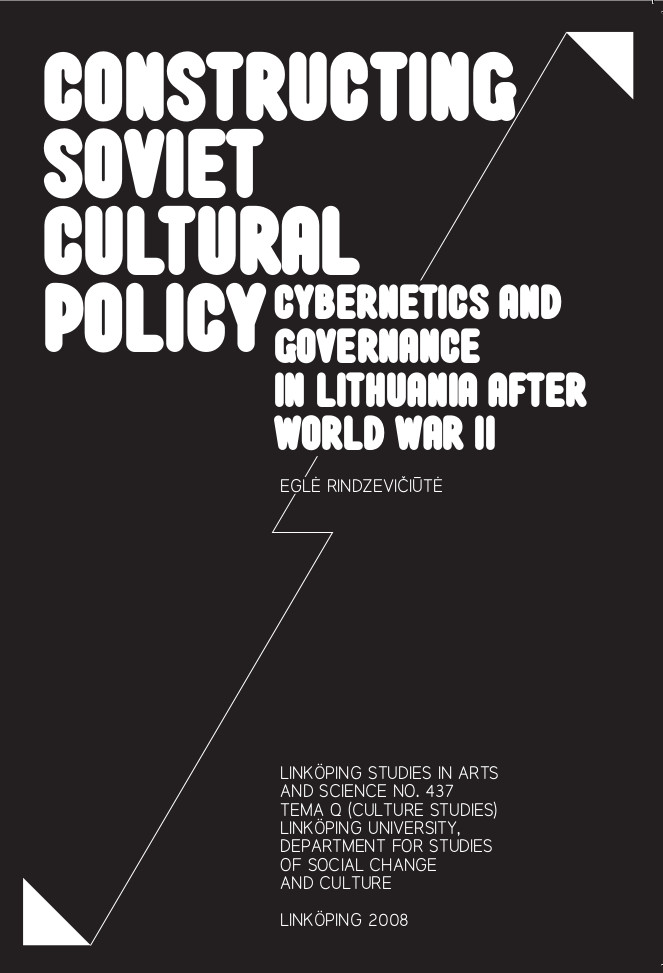Ute Holl: Cinema, Trance and Cybernetics (2002–)
Filed under book | Tags: · anthropology, avant-garde, cinema, cybernetics, film, film history, psychology, theory

“Ute Holl explores cinema as a cultural technique of trance, unconsciously transforming everyday spatio-temporal perception. The archaeology of experimental and anthropological cinema leads into psycho-physiological laboratories of the 19th century. Through personal and systematic catenations, avant-garde filmmaking is closely linked to the emerging aesthetics of feedback in cybernetic models of the mind developed at the same time. Holl analyses three major fields of experimental and anthropological filmmaking: the Soviet avant-garde with Dziga Vertov and his background in Russian psycho-reflexology and theory of trance; Jean Rouch and his theory of cine-trance and the feed-back; and the New American Cinema with Maya Deren and Gregory Bateson conceptualising the organisation of time, space, movement and feedback trance in anthropological filmmaking.”
First published as Kino, Trance und Kybernetik, Brinkmann & Bose, Berlin, 2002.
Translated by Daniel Hendrickson
Publisher Amsterdam University Press, Amsterdam, 2017
Recursions series
Creative Commons BY-NC 4.0 License
ISBN 9789089646682, 908964668X
326 pages
Egle Rindzevičiūtė: Constructing Soviet Cultural Policy: Cybernetics and Governance in Lithuania after World War II (2008)
Filed under thesis | Tags: · cybernetics, governance, lithuania, politics, soviet union, technology

After World War I, the Soviet Union was one of the first modern states to engage explicitly in the governance of culture, which was formalised and institutionalised as state cultural policy. In this process of governance, sciences and technologies provided the state with conceptual and material resources, which were used to define both the process and the object of governance. After World War II, scientific and technological progress gave birth to a new science of control and communication, Norbert Wiener’s cybernetics, which was widely used not only in engineering, but also in the conceptualisation of humans, machines and societies. This thesis explores how cybernetics influenced the construction of cultural policy in the Soviet Union. It focuses particularly on the Soviet republic of Lithuania. The main argument is that since the 1950s a particularly powerful discourse of cybernetic governance was formed in the Soviet Union. A result of translation from techno-science, this discourse not only served the purposes of authoritarian rule, but was also used as a resource by cultural operators to criticise the Soviet government itself. By analysing organisational practices and official and public discourses, the study reveals the complexity of the relationship between governance, culture and sciences and technologies.
Doctoral thesis
Faculty of Arts and Sciences, Linköping University, 2008
274 pages
Norbert Wiener: Cybernetics, or the Control and Communication in the Animal and the Machine (1948–) [EN, RU, IT]
Filed under book | Tags: · animal, computing, cybernetics, machine, mathematics

“Acclaimed as one of the ‘seminal books … comparable in ultimate importance to … Galileo or Malthus or Rousseau or Mill’, Cybernetics was judged by twenty-seven historians, economists, educators, and philosophers to be one of those books published during the ‘past four decades,’ which may have a substantial impact on public thought and action in the years ahead.”—Saturday Review
First published by Hermann & Cie, Paris, 1948.
Second edition
Publisher MIT Press, 1961
Fourth printing, 1985
ISBN 026273009X, 9780262730099
212 pages
Cybernetics, or the Control and Communication in the Animal and the Machine (English, 2nd ed., 1948/1961, PDF, DJVU, updated on 2015-12-6)
Kibernetika, ili upravlenie i svyaz v zhivotnom i mashine (Russian, trans. G.N. Povarov, 1958, DJVU, added on 2021-4-8)
La cibernetica: controllo e comunicazione nell’animale e nella macchina (Italian, trans. Giampaolo Barosso, 1968/1982, added on 2021-4-8)
See also Monoskop resource on Cybernetics.
Comment (0)
